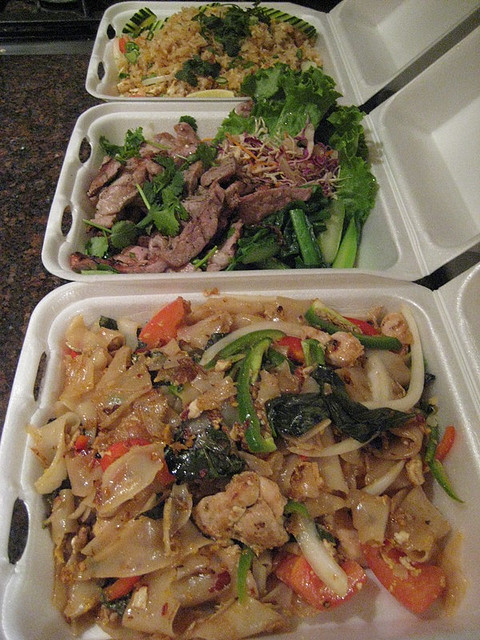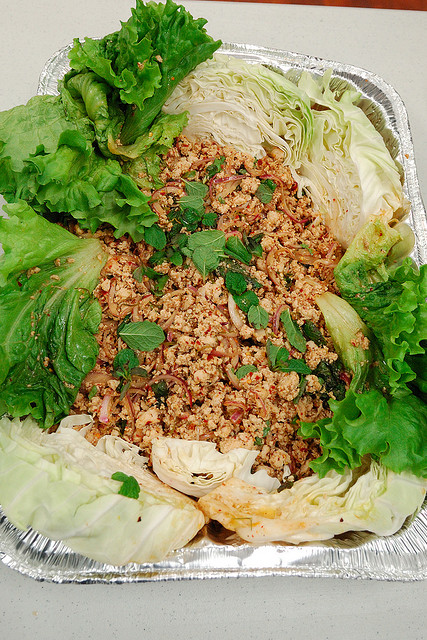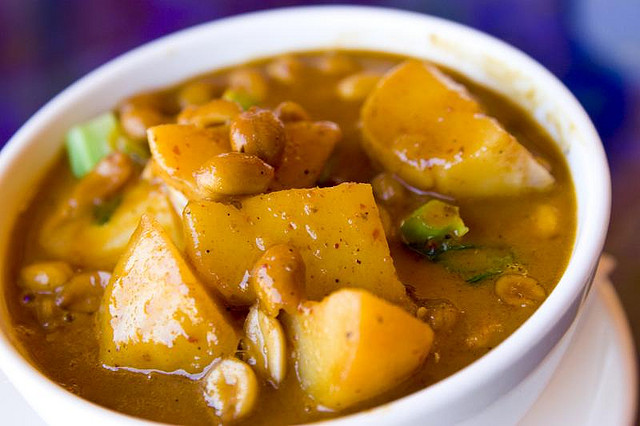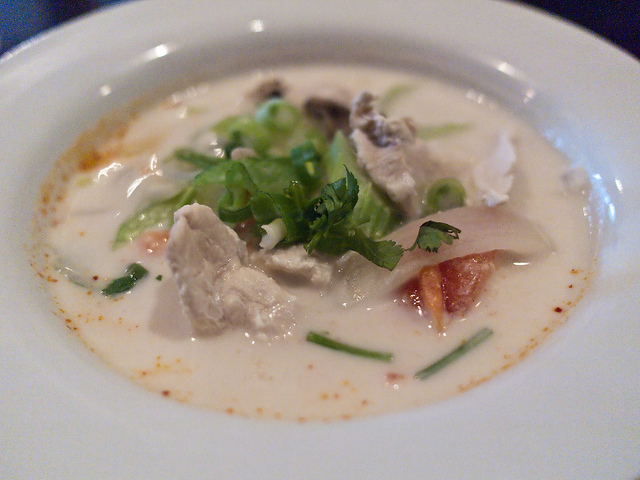Thai Food for Beginners: How to Order More Exciting Office Meals
Bursting with bright flavors and fresh ingredients, Thai food is incredibly diverse and delicious — no wonder it’s one of the top cuisines ordered in for office meals. If you’re new to the wide world of Thai food, though, it can also be quite intimidating! Does something called Pad See Ew actually taste good? What’s the difference between Massaman and Penang curries? And what, exactly, is Larb?

Image source: Flickr user calamityjane
If all you ever order is Pad Thai, read on. Thai food for beginners can be confusing, but we’ve picked out a few delicious (yet still approachable) must-try dishes for those who want to explore this adventurous cuisine! This guide is also handy for admin assistants who might need to please a variety of palates (or even picky eaters). So next time your office orders Thai food delivery, consider one of the following:
Larb
Essentially, larb is a salad, but don’t expect lots of lettuce or greens! Larb (also spelled larp, laap, or laab) is a mound of diced meat, mushrooms, or tofu that’s been well-mixed with herbs and onions. It might contain lots of lime juice and fish sauce, and sometimes chopped, toasted rice for a wonderfully crunchy texture. Larb is actually from Laos, but is a common dish on Thai menus — sometimes it’s an appetizer, sometimes it comes as a “set” with sticky rice and papaya salad, and sometimes it’s just an entree. In all cases, it’s delicious!

Image source: Flickr user Michael Seachang
The Curry Rundown
Creamy, coconut milk-based curries are the most common on menus in American Thai restaurants, but there are a few water-based versions: sour curry (gaeng sohm play) and jungle curry (gaeng pah). These will generally be lower in fat, but also much hotter, since there’s no creamy coconut milk to cut down the heat… consider yourself warned!
When ordering a Thai curry, you can usually choose your preferred protein: shrimp, chicken, pork, and tofu are the most common. Most restaurants will ask how spicy you want your curry; start with mild or medium if you’re new to the cuisine!
Panang curry is thick, rich, and less soupy than red or green curries, since it uses a little less coconut milk and adds in coconut cream. The flavor can be a bit more pronounced than the other curries; Panang curry sometimes includes peanuts, and is traditionally served with beef.
Massaman curry literally means “Muslim curry”; it carries a heavy influence from the Muslim population of a Malaysian island near Thailand. Usually made with lamb or beef (since Muslims don’t eat pork), Massaman curry has more of a roasty-spice flavor, from the unique inclusion of ingredients like cinnamon or nutmeg.

Image source: Flickr user Yong Suk Yun
Green curry is made from fresh green chiles, and usually includes bright flavors from lemongrass, kaffir lime, and sweet basil. Eggplant is usually the featured vegetable, and chicken might be the most popular protein. Kang Keaw Wan Kai (sweet green curry with chicken) is a great starting point for beginners.
Red curry is usually made from dried red chiles, along with spices like coriander, cumin, and turmeric. It’s very versatile and can include a wide range of proteins and vegetables.
Yellow curry is perhaps the mildest (although this can vary widely by restaurant and who’s in the kitchen!), usually with more turmeric, shallots, garlic, and ginger. Potatoes often make an appearance in yellow curry, along with chicken and onions.
Soup: Tom Kha Kai versus Tom Yam Kai
Both are chicken soups (kai means chicken), but they’re quite different: Tom Yam Kai is a spicy, broth-based soup, while Tom Kha Kai is a milder, creamy soup sweetened with coconut milk. Each soup packs a ton of flavor, but don’t order Tom Yam Kai unless you like a little heat. And if you do like spicy foods, go for Tom Yam Goong — made with shrimp instead of chicken, it’s one of the most flavorful dishes on the menu.

Image source: Flickr user Edsel Little
Pad See Ew
There’s nothing “ew” about this hearty noodle dish, and if you’ve been hooked on the nutty flavors of Pad Thai, try Pad See Ew one next time. Thick, chewy noodles stir-fried with greens and a luscious soy sauce make this classic Thai dish simple but very delicious.
The best way to try more Thai food? Order a big variety, and serve it family-style in the break room for a fun, festive team lunch! Whether your workplace is full of culinary experts or needs a wide variety of Thai food for beginners, Waiter.com can help provide quick, fresh food delivery for delicious, Thai-inspired office meals.